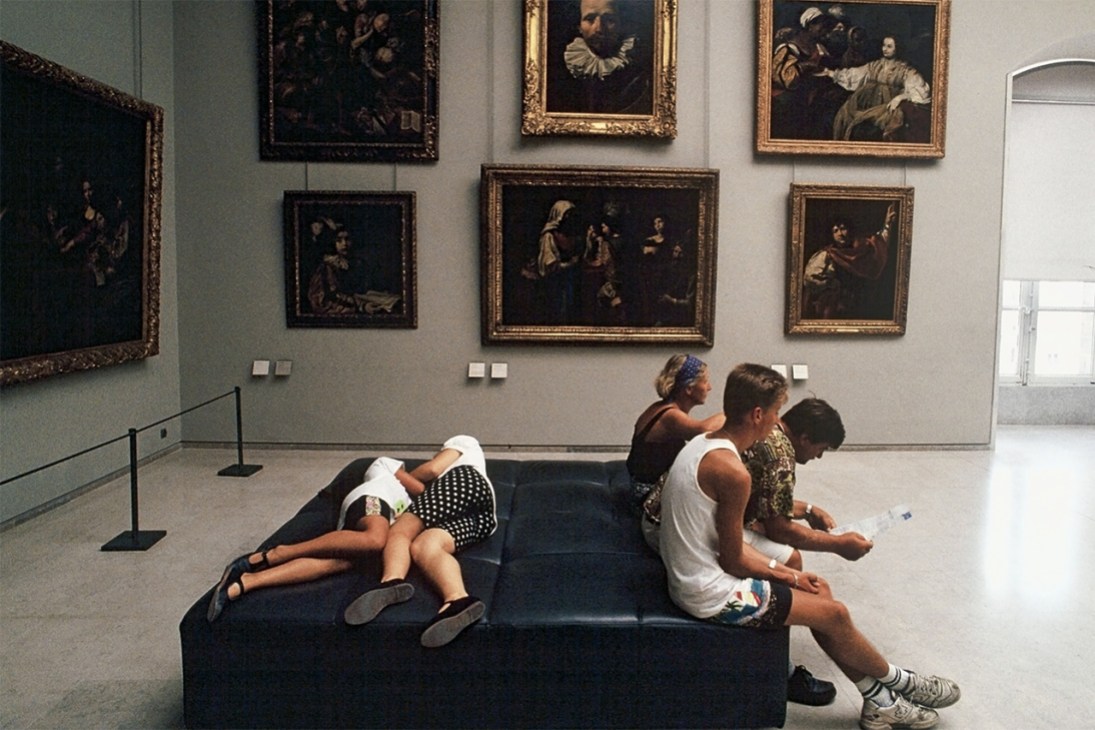Art critic Kenneth Clark once admitted that he could enjoy a “pure aesthetic sensation” no longer than he could the scent of an orange – less than two minutes. Now picture one of the world’s big art museums, an almost unending succession of aesthetic pleasures. That’s a lot of oranges.
It’s little wonder, then, that researchers have been studying “museum fatigue” since the early 20th century. Looking at paintings is pleasurable but it’s also hard physical and cognitive work. Imagine a visitor on a once-in-a-lifetime trip to the Louvre, wanting to “take it all in”. Faced with such abundance, most people act like contestants on the old game show Supermarket Sweep, grabbing as much as they can in what little time they have. A curator at New York’s Metropolitan Museum of Art found that people looked at individual paintings for 17 seconds each on average. Researcher Stephen Bitgood notes that we ruthlessly try to “maximise utility” in museums; people, for instance, won’t walk back to an area that they’ve already seen.
A recent spell touring several artistic treasure houses in Europe had me thinking about how to experience museums in the most engaging and pleasurable way. The first step is to admit that you won’t see anything remotely approaching the full collection – nor should you try. In his book All the Beauty in the World, former museum guard Patrick Bringley notes, “If you think of The Met’s Old Master wing as a village, it has almost 9,000 painted inhabitants.” Why would you think that you could get to know more than the tiniest fraction in a day?

In this spirit, along with new acquaintances, I try to visit old friends. One of my favourites at The Met is Henri Fantin-Latour’s “Portrait of a Woman” in gallery 810. What particularly captivates me is the story behind it. “The sitter called herself Mme Leroy, a name the artist suspected was false,” the wall text reads. “She insisted on paying for her portrait in advance.” She was accompanied by a mysterious American named Becker. “The couple’s full identities and the nature of their relationship remain unknown.” Was this some tryst being carried out via an artist’s studio, some 19th-century version of the Astronomer-CEO-at-the-Coldplay-show spectacle? There’s an entire novella in that painting.
Rather than a one-and-done “bucket-list” experience, museums should be treated like gyms for the mind and body, more than the soul – places that you regularly return to for upkeep. When I lived in Madrid, I would duck into the Museo del Prado (then free to enter) between appointments to look at two or three paintings (often Velázquez’s bewitching masterwork, “Las Meninas”), then return to the outside world, my mind at once activated and stilled.
But if you find your attention or spirit flagging, there are games to play. I tend to enter a room and sit. As museum expert Kenneth Hudson once asked, “Don’t we generally take things in better sitting down?” I will glance around the room, choosing one painting that calls to me. Without looking at the wall text, I’ll try to understand as much as I can about it – who painted it, the period, what the title might be. Then I’ll compare my guesswork with the curator’s information. Alternatively, economist Tyler Cowen has another strategy. “When you go through each room, ask yourself which picture you would take home (if you could take just one) and why,” he says. “This forces you to keep thinking critically about what you are seeing.”
More important than what to see is what not to see. Rather than grimly trying to absorb everything in a slog of appreciation, allow yourself the freedom to bypass works, even entire collections, until your level of interest has risen. Always leave yourself wanting more orange.
Further reading? Click here to read about how the digital world is no substitute for encountering culture in person.



















